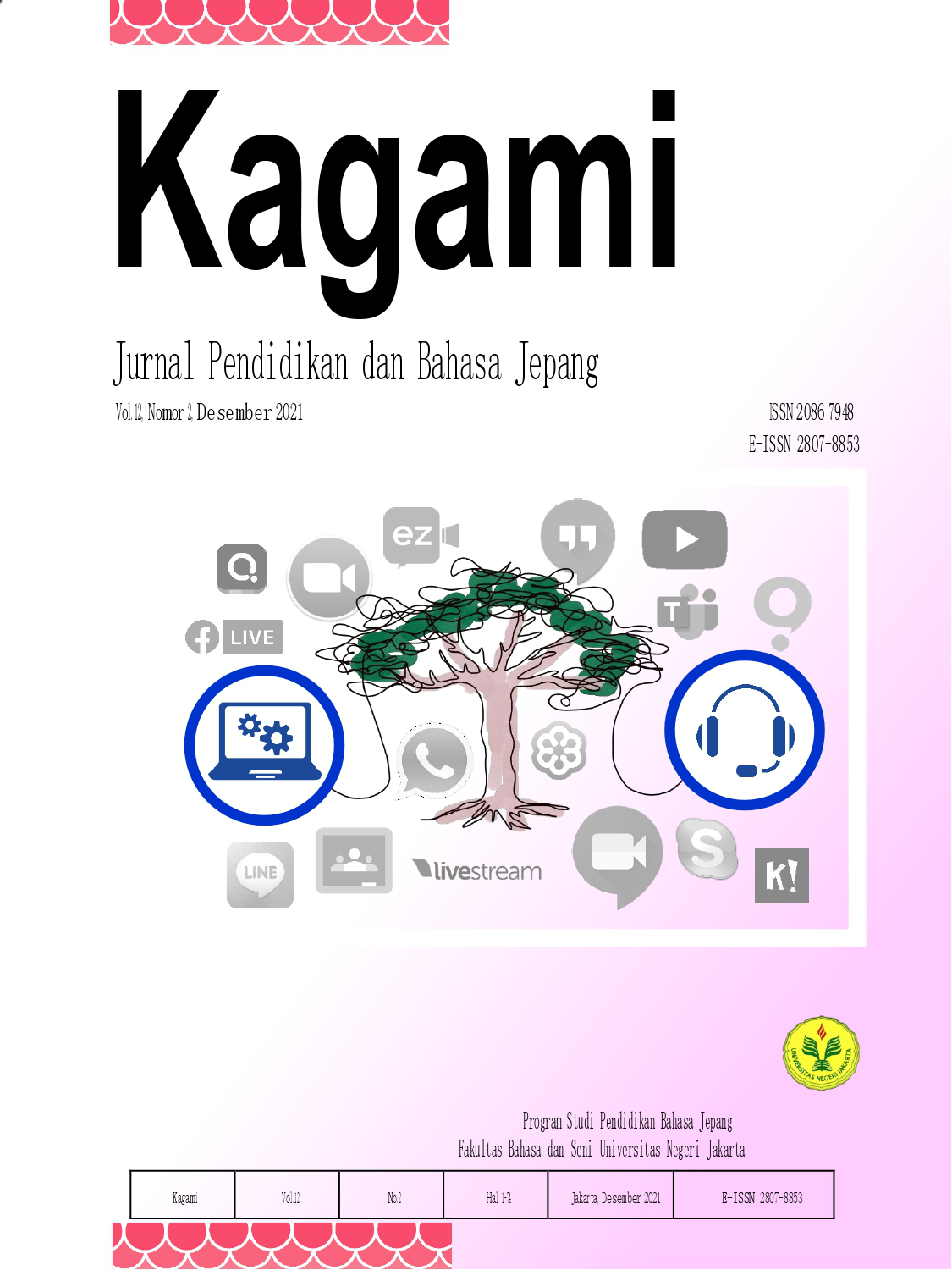The Use of Internet Japanese Laughing Slang in Twitter Social Media
DOI:
https://doi.org/10.21009/kagami.141.04Keywords:
internet slang, writing, laughing expression, TwitterAbstract
The use of internet and social media is expanding as times develop, this has led to apperance of various kinds of slang on the internet. The slang that appears on the internet is called internet slang. One of the slang that is often used in a social media called Twitter is “笑”. “ 笑” is an internet slang used to express laughing or funny expressions by the writer and usually placed at the end of t he sentence. Collection of data and references used in this study were books, articles, online journals, and websites by using the literature study method. The purpose of this research is to find out how the laughter internet slang is used and formed. The result of this study indicate that there are 12 internet slang that is used to express laughter on social media called Twitter, each of those expressions have uniqueness in how they are formed and used. One example is w (wara) which is a shortening of the kanji “笑” by taking the first letter of the romaji spelling of the kanji, and also by adding how many “w” are written, the writer can increase the intensity of the laugh that he wants to convey. Another result of this study is that internet slang for laughter is usually placed at the end of sentences to avoid accidental kanji merging and mistakes when changing from hiragana to kanji. And last, the use of internet slang of laughing expression can be combined with other internet slang of laughing expressions, one of the example is “笑w”.
References
Alwasilah, A. C. (1985). Sosiologi Bahasa. Bandung: Angkasa.
_______. Linguistik: Suatu Pengantar. Bandung: Angkasa. Depdikbud. (1993). Kamus Besar Bahasa Indonesia. Jakarta: Balai Pustaka.
Grundlingh, L. (2020). Laughing online: Investigating written laughter, language identity and their implications for language acquisition. Cogent Education, 7(1). doi:https://doi.org/10.1080/2331186X.2020.1738810
Kridalaksana, H. (2008). Kamus Linguistik. Jakarta: PT Gramedia Pustaka Utama.
McKay, I. (2015). Laughing with Letters: A Corpus Investigation of the Use of Written Laughter on Twitter. Michigan: University of Michigan Linguistics Department.
Sayaka, T. (2017). Gendai ni okeru wakamonogo no shiyou youin : poraitonesu no shiten kara mita wakamonogo. Ibaraki: Ibaraki Kirisitokyou Daigaku.
Sudjianto, & Dahidi, A. (2007). Pengantar Linguistik Bahasa Jepang. Jakarta: Kesaint Blanc.
Tankovska, H. (2021). Leading countries based on number of Twitter users as of January 2021. Diambil kembali dari Statista: https://www.statista.com/statistics/242606/number-of-active-twitter-users-in- selected-countries/
Uchiyama, H. (2010). An Analysis of Japanese used in the Net World -2channel and Niko Niko Doga-. Chiikiseisakugakukenkyuu, 219-236.
Widjajanto, K. (2013). Perencanaan Komunikasi: Konsep dan Aplikasi. Bandung: Ultimus.
Yonekawa, A. (1998). Wakamonogo wo Kagakusuru. Tokyo: Meijishoin.
Downloads
Published
Issue
Section
License
Copyright (c) 2025 Dwi Astuti Retno Lestari, Calvin Dwibijaya

This work is licensed under a Creative Commons Attribution 4.0 International License.





